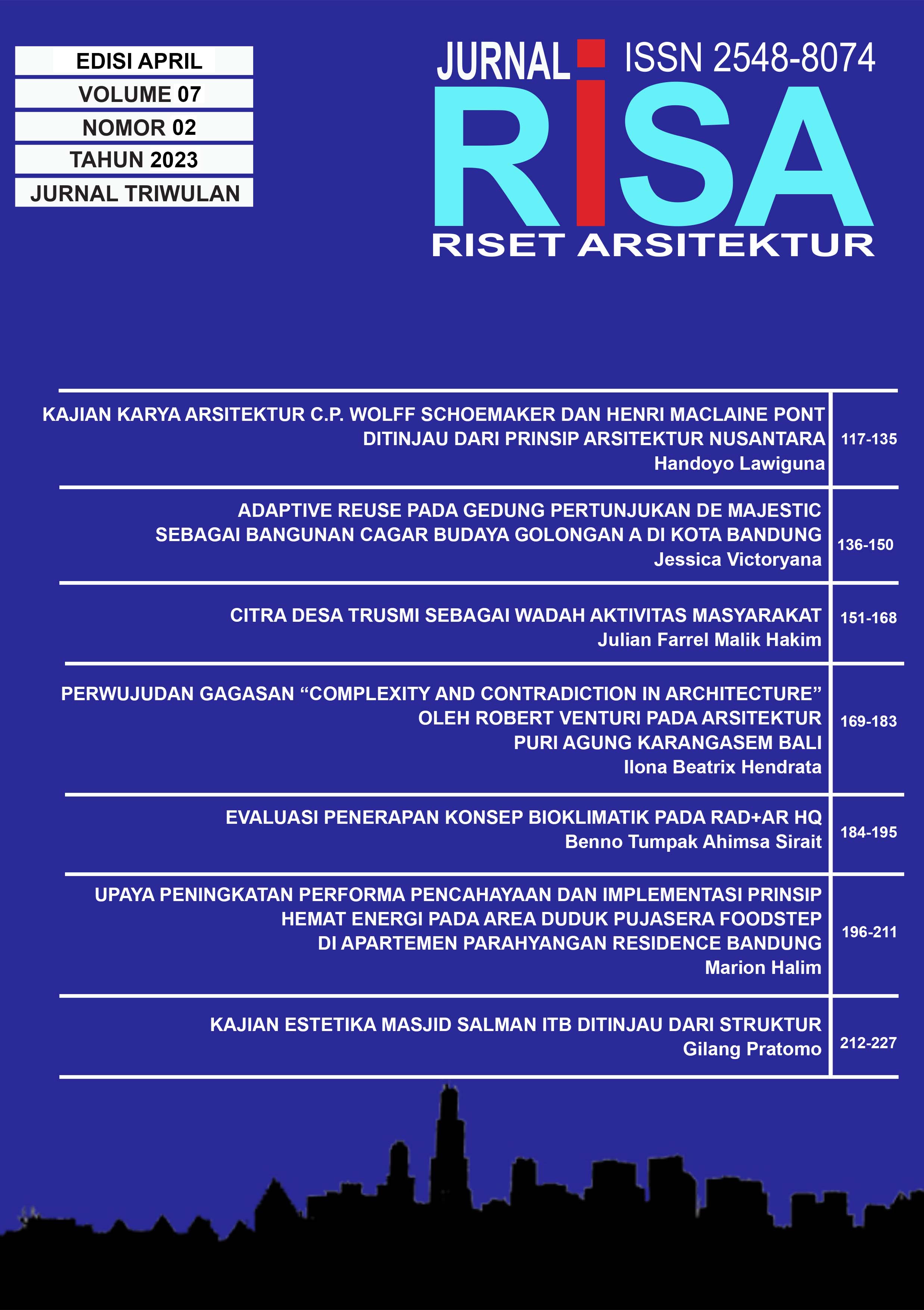IMAGE OF TRUSMI VILLAGE AS A CONTAINER OF COMMUNITY ACTIVITIES
DOI:
https://doi.org/10.26593/risa.v7i02.6602.151-168Abstract
Abstract - The image is a visualization that formed by the interaction between human as an observer and an object. The visualization is an impression of an object to be easier to remember by the observer. The image in architecture has a role to give a picture to the observer about the structure of a space or region. The observer will have a picture of the space whenever remembering it. The appearance of the image will be different according to who the observer is. Building an image of a particular place is needed because it will create meaning or value for the one that has been there to build a connection to the place. If anyone remembers there is a memory left there, anyone has a tendency to value the place.
Trusmi Village in Cirebon already has an identity as a village that full of batik artisan and still preserves their culture. This identity is still preserved since they still doing things that related to the ancestors’ tradition and batik crafts.
This study aims to understand the influence of daily activities and traditional activities carried out by the community on the image-forming elements in Trusmi Village. The place to carry out activities will be identified by the community as an element forming the image of Trusmi Village. The method used is quantitative, data obtained from literature studies, direct observations in the field, and interviews with residents of Trusmi Village. Observations focused on the activities of the residents and their places of activity, which were then mapped out by activities in the village. Then, from the activity data, it will be analyzed with image-forming elements so that it can be seen the path used for the activity, the edge that becomes the boundary of the activity space, the district found as the center of activity, nodes that become the point gathering, and landmarks that guide activity orientation. The conclusion of this study, it was found that the "Image of Trusmi Village" can be found based on the analysis of the place where community activities are carried out in Trusmi Village. This shows the influence of the residents' daily activities and activities carried out as a tradition informing the physical picture of Trusmi Village.
Trusmi Cirebon village can be concluded as a village whose image is easy to remember because in this village you can find the Main Path which is the place for daily activities, Strong Edge which is a continuous wall of batik showrooms on the Main Path, District Center for Ritual and Commercial Activities, Anchor Nodes, and Landmarks are used to direct the community within the village and visitors from outside the village.
Key Words: Activity, ancestors’ tradition, batik, image-forming element, Trusmi Cirebon Village
Additional Files
Published
Issue
Section
License
Copyright (c) 2023 Julian Farrel Malik Hakim

This work is licensed under a Creative Commons Attribution-NonCommercial-ShareAlike 4.0 International License.












